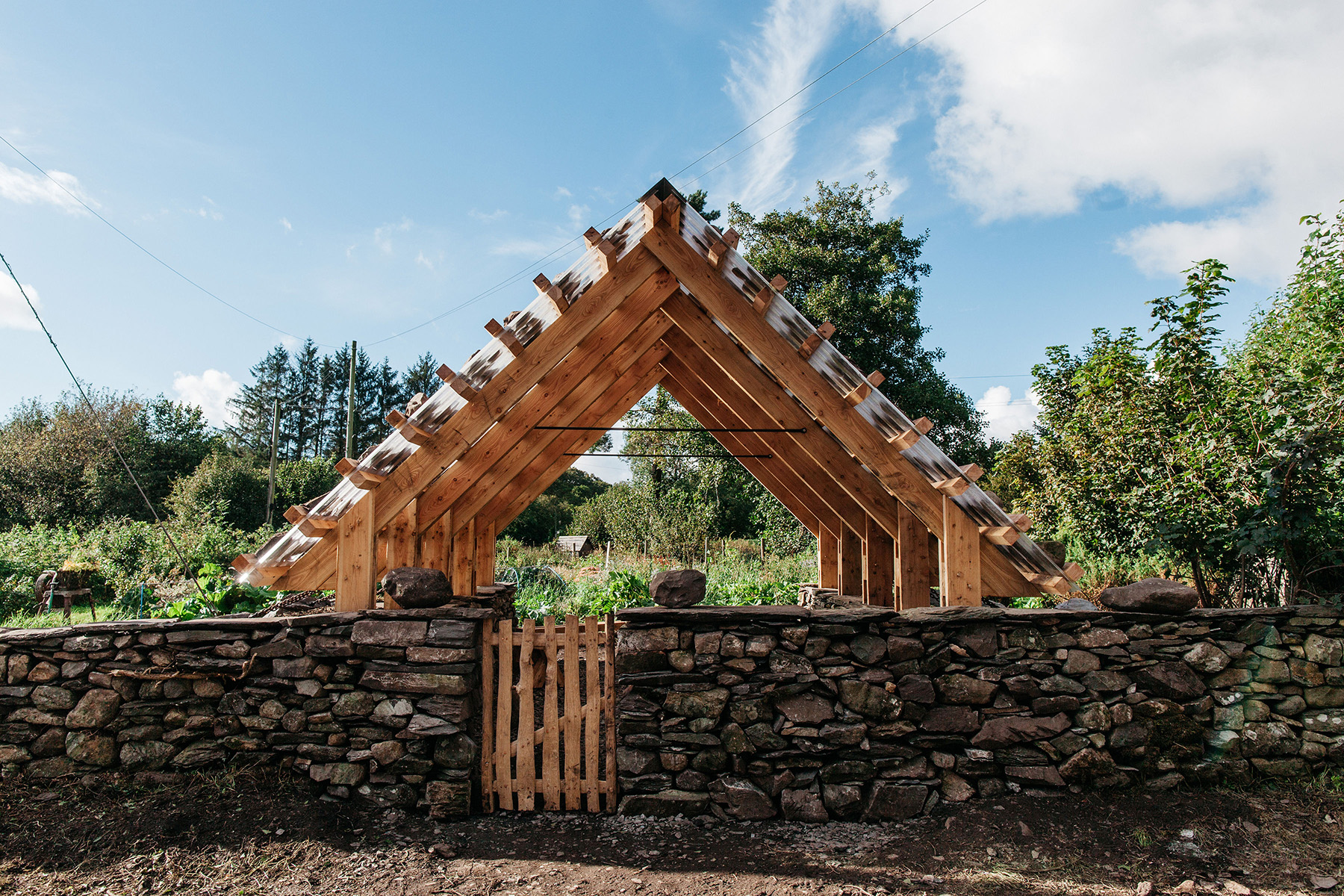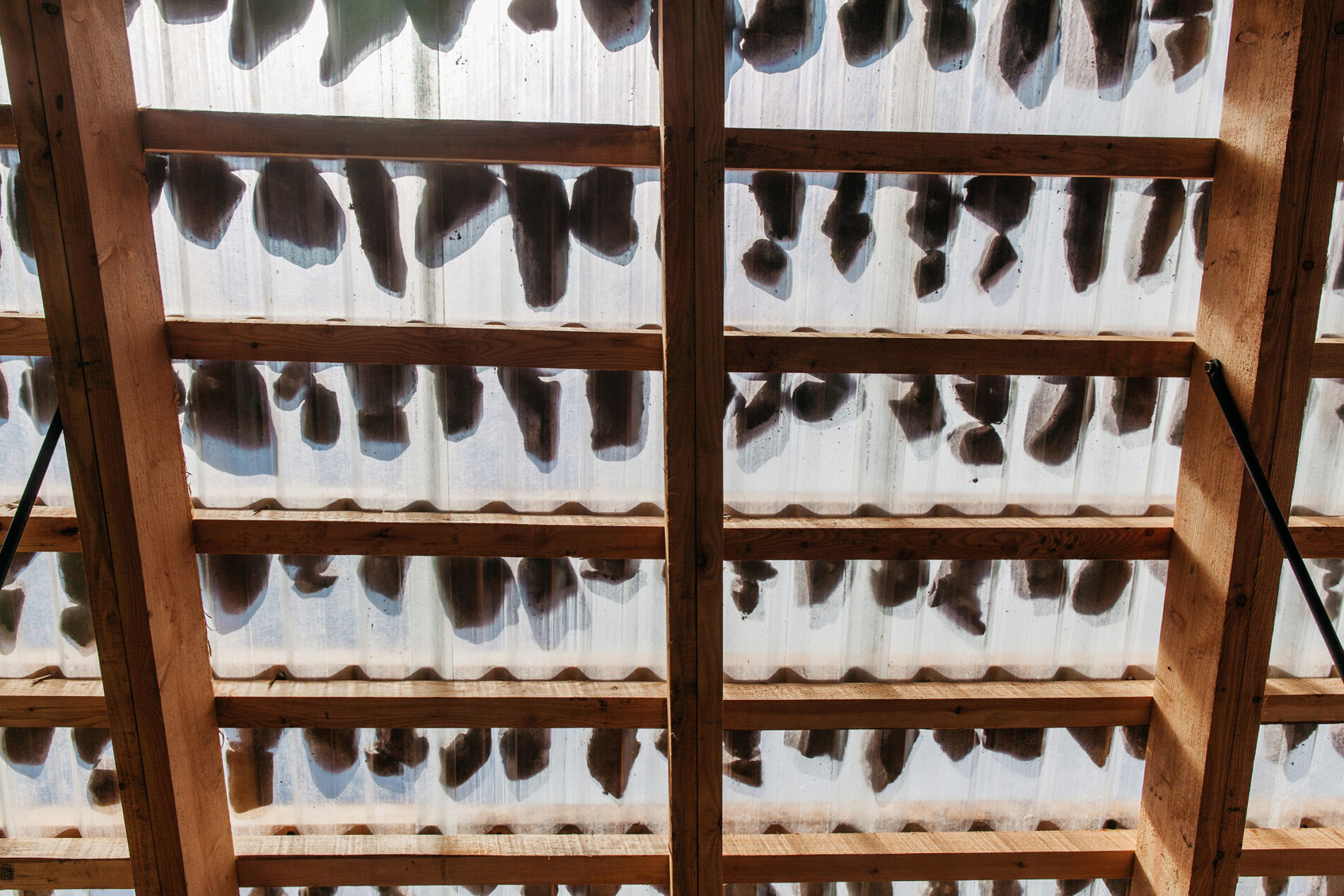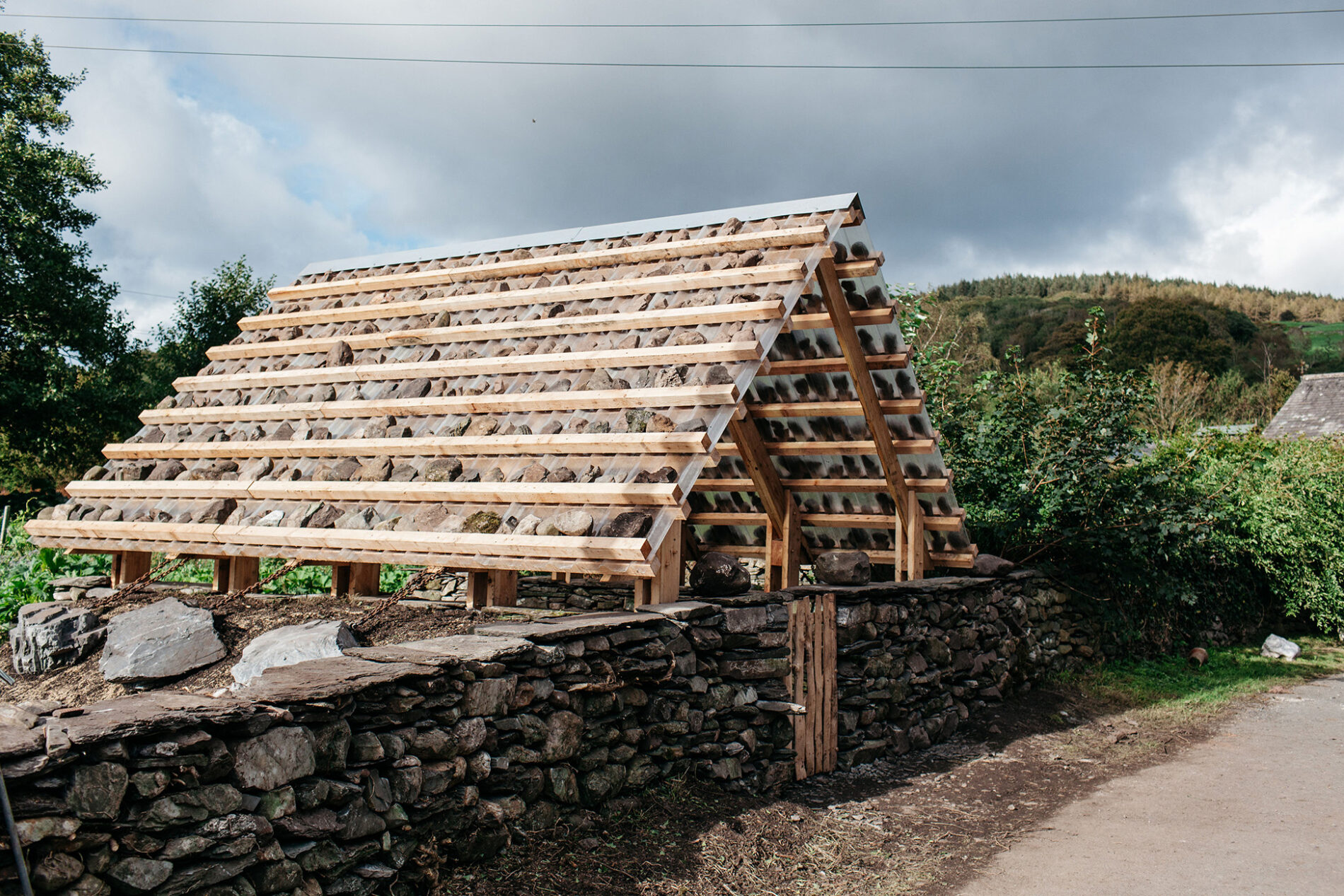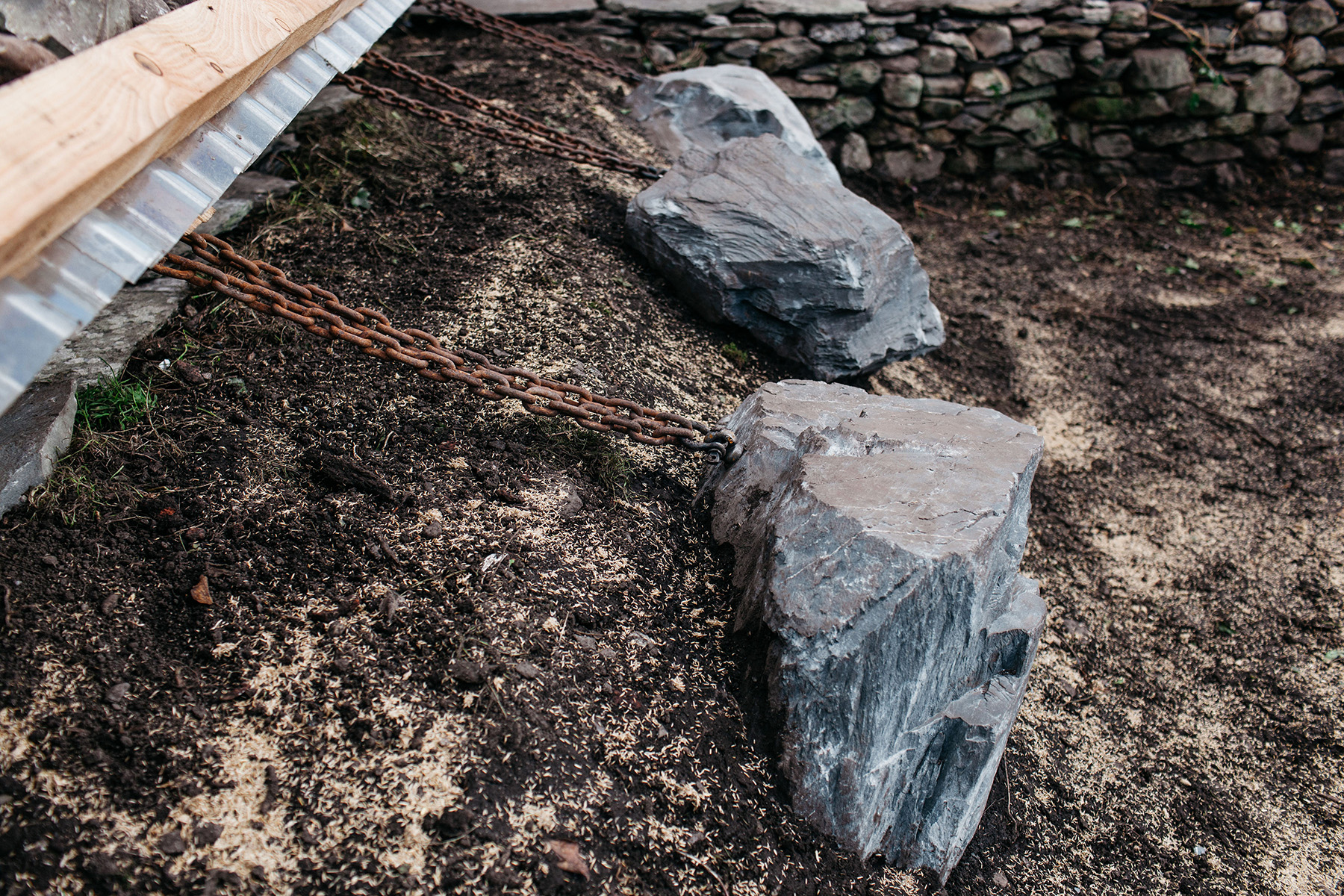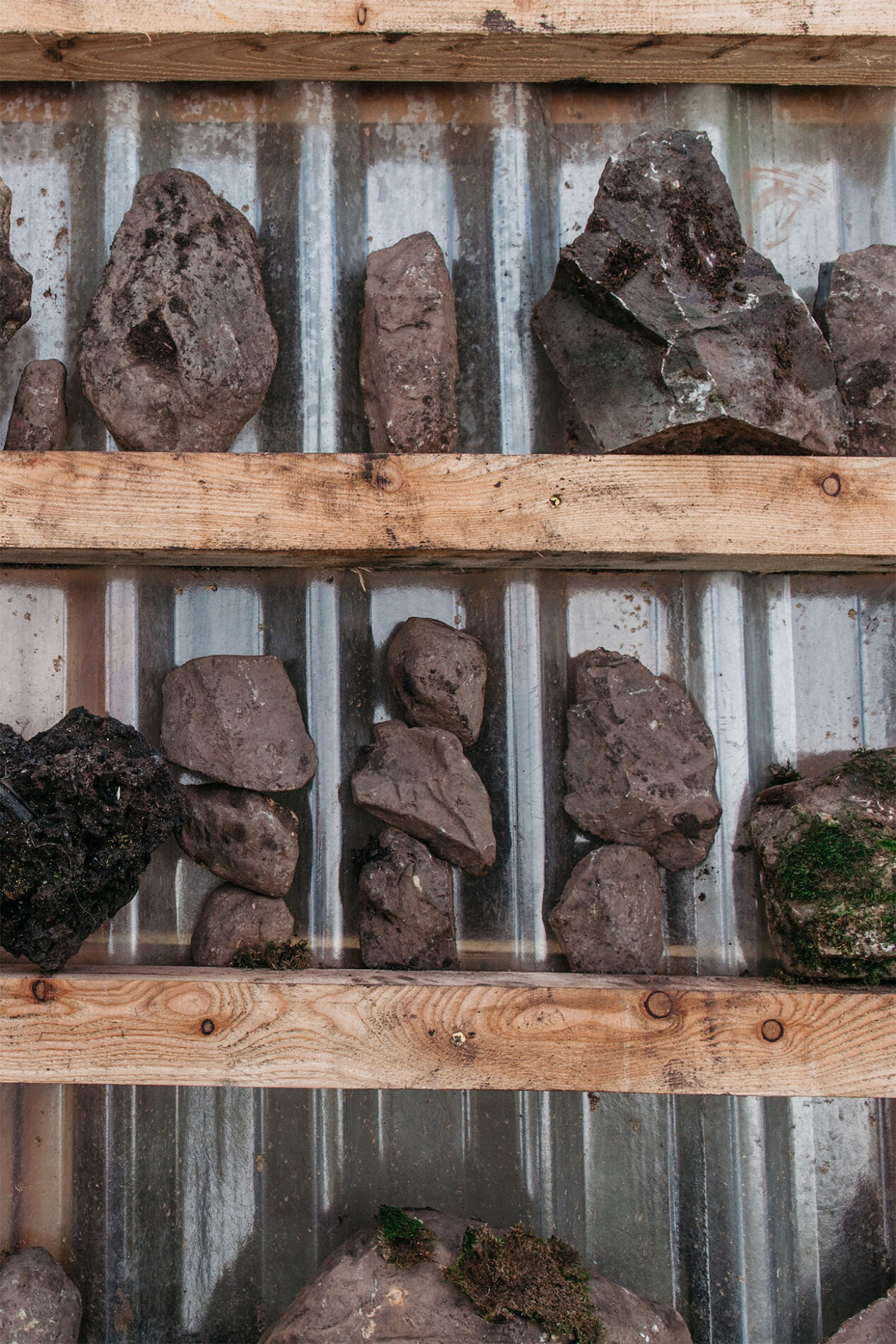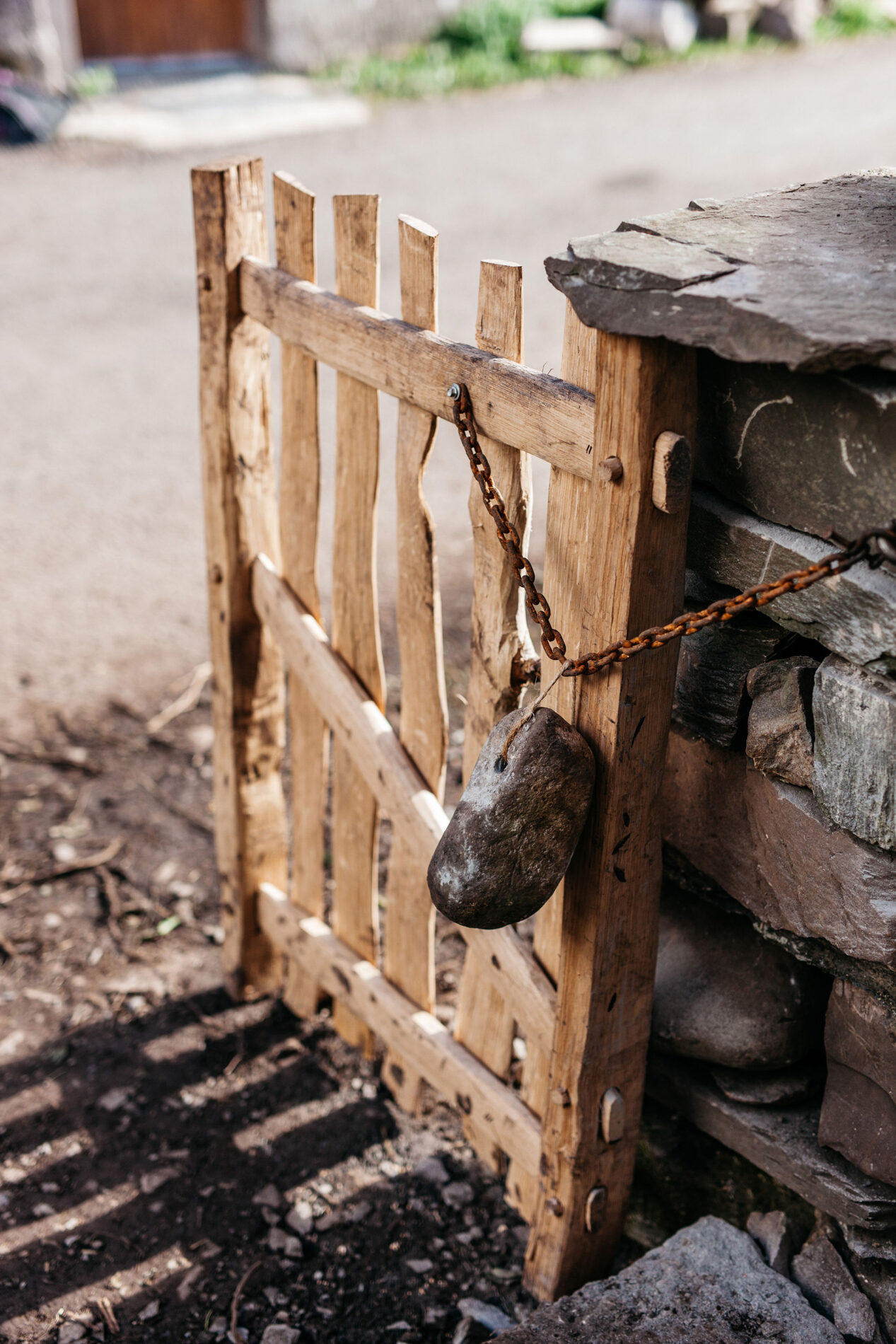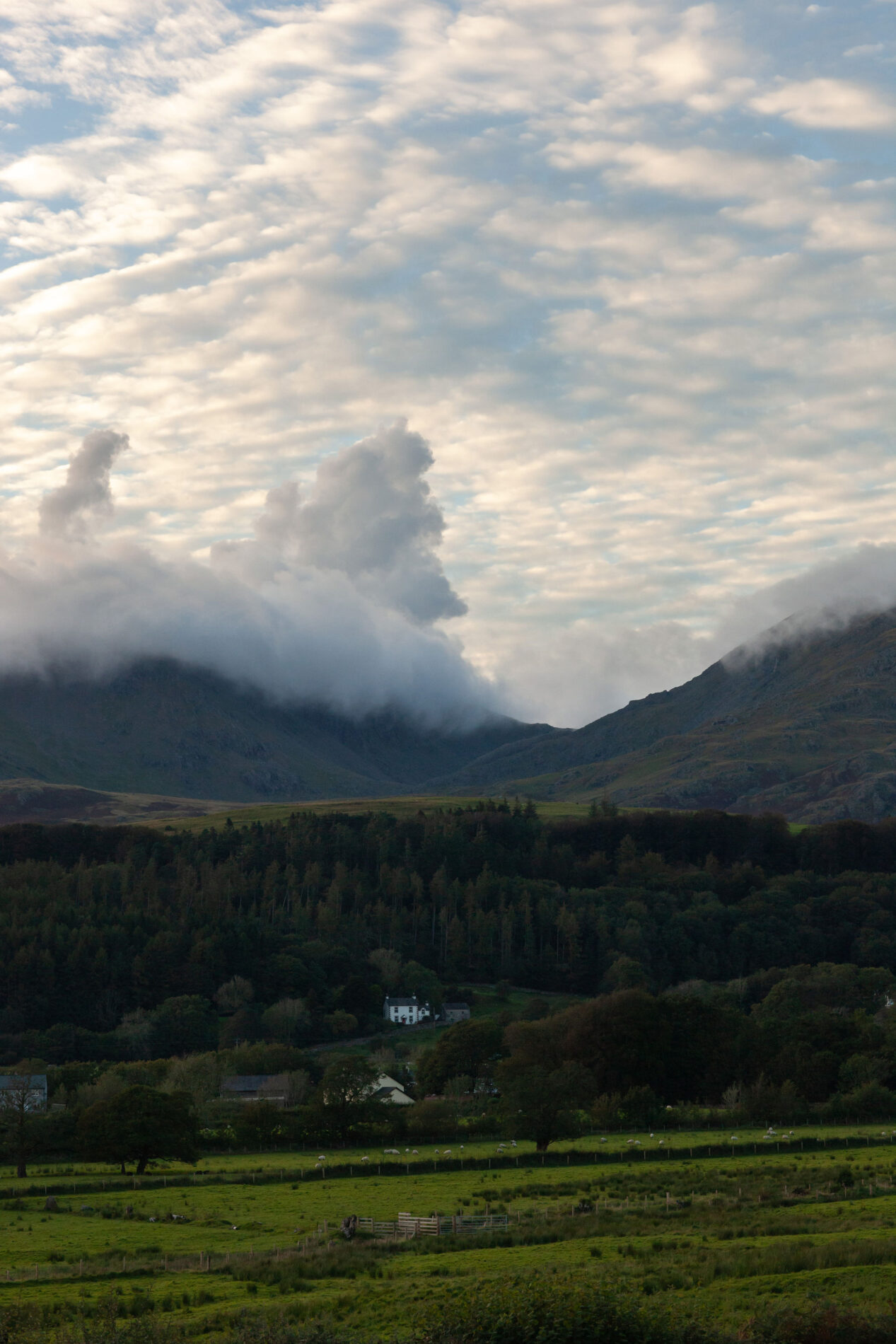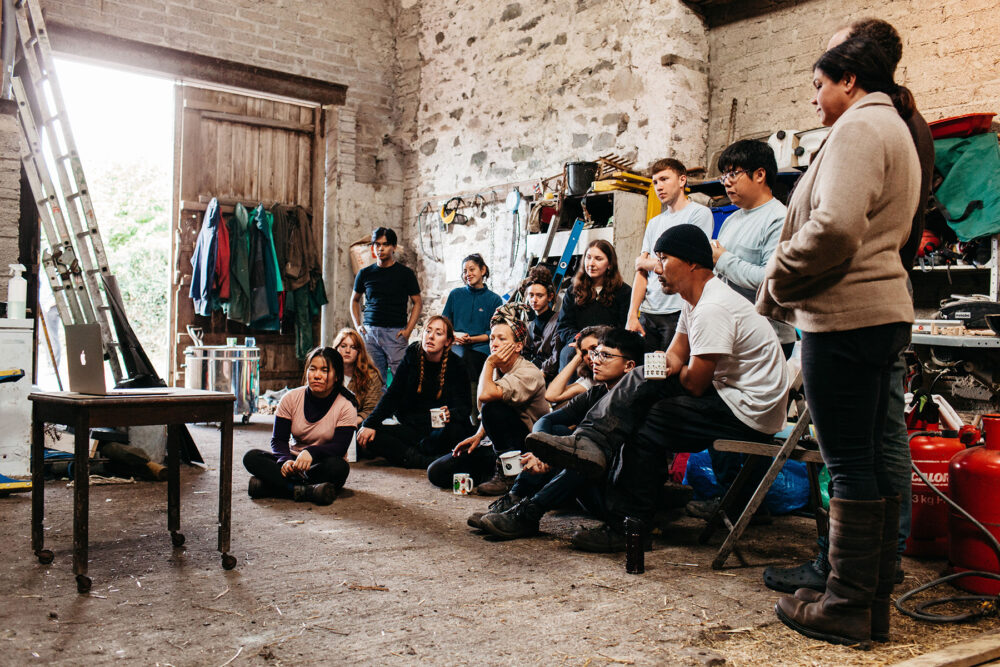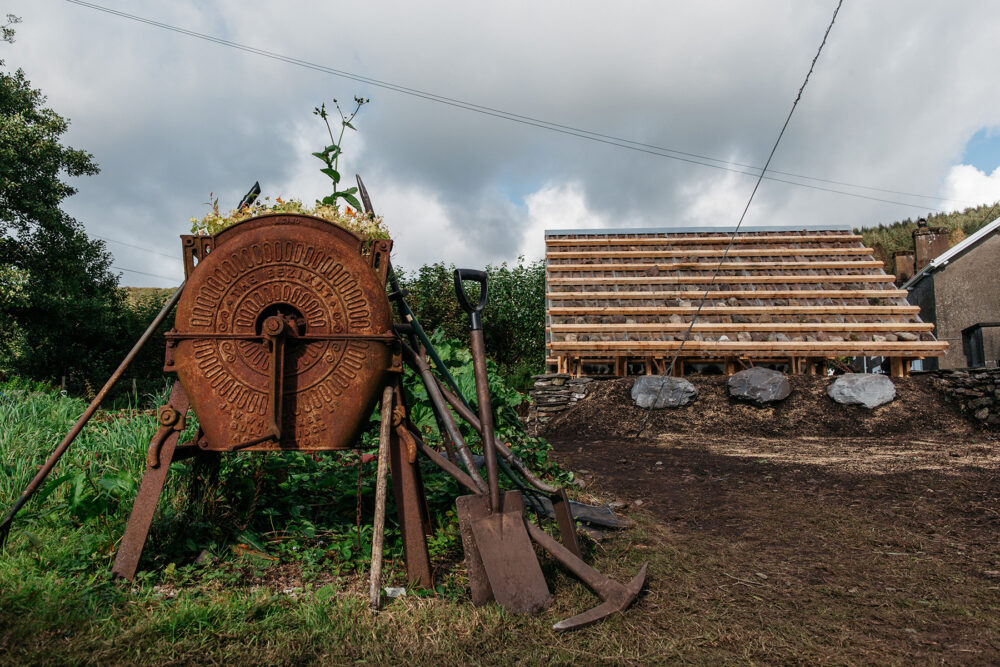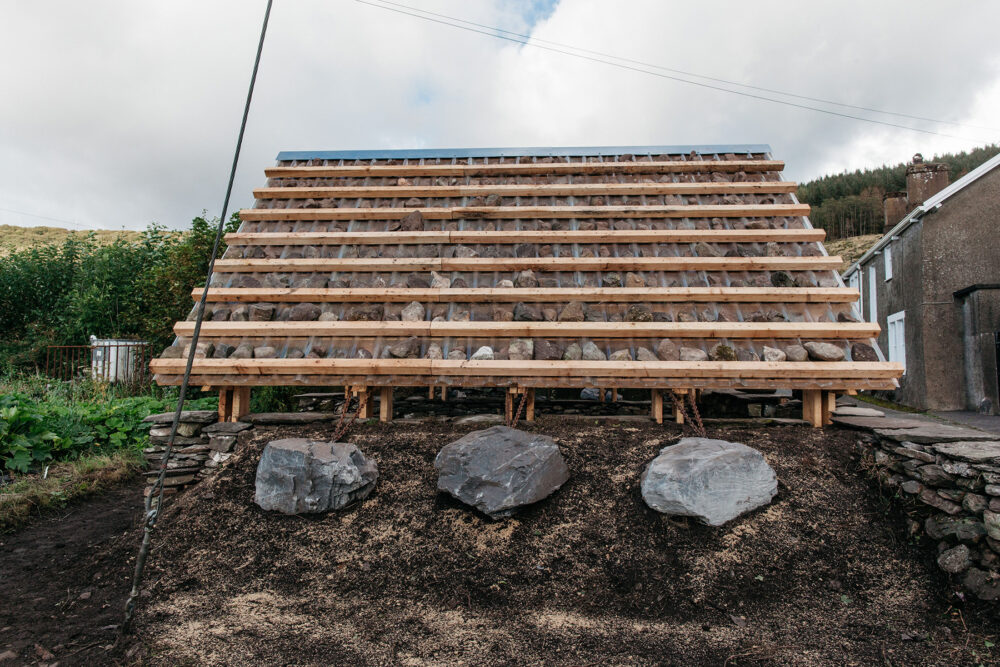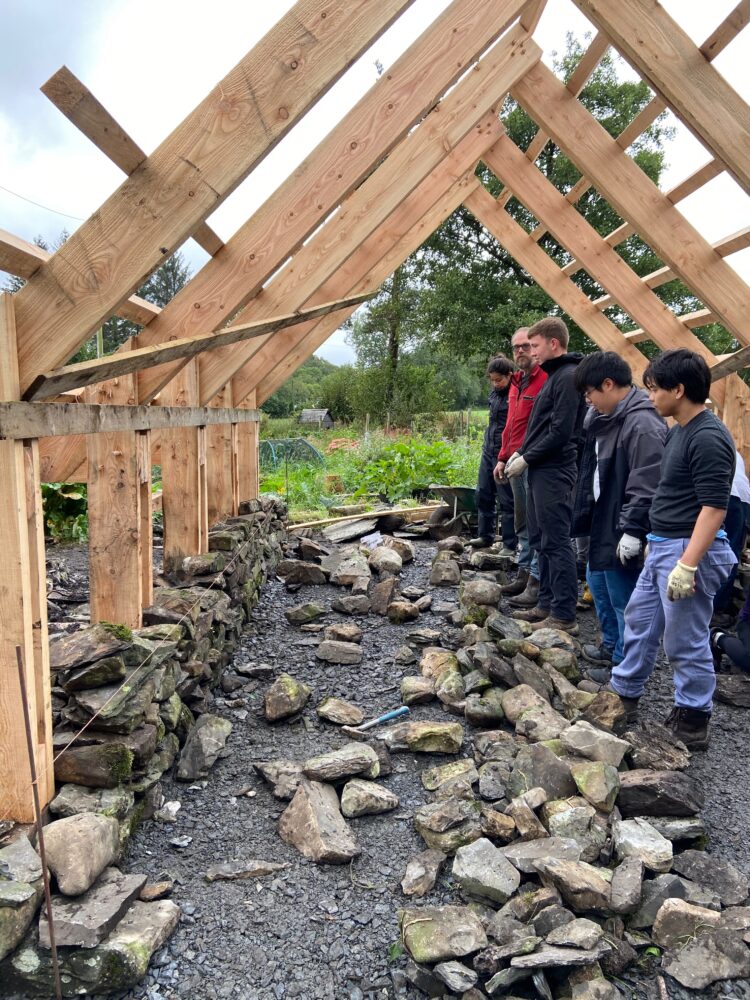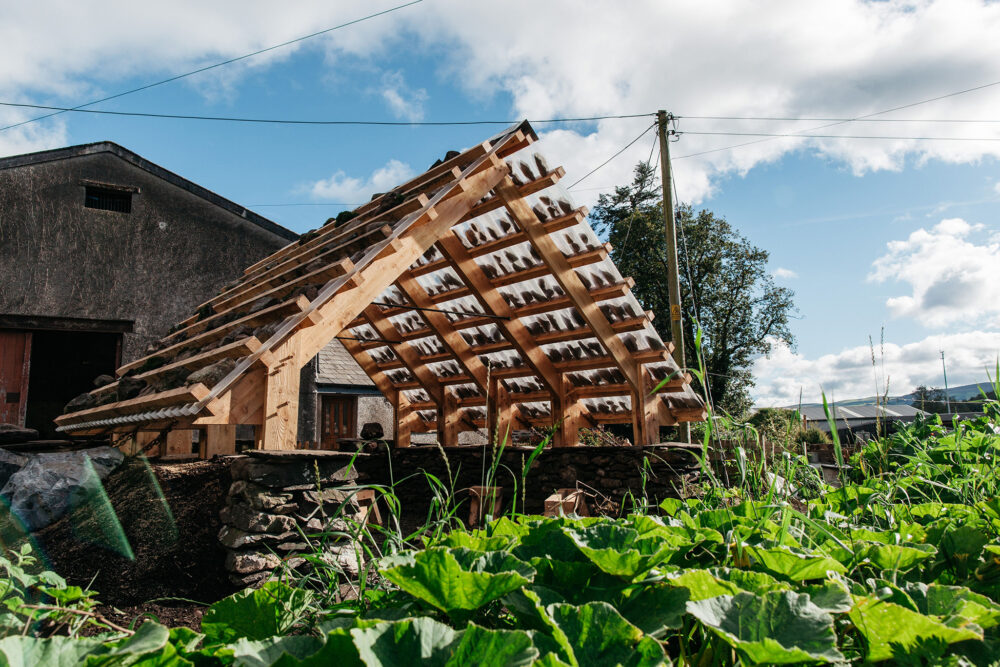Using materials sourced from the Crake Valley around Coniston Water, participants experimented with and fabricated elements for a collaborative building, developing a new construction language with ancient materials.
The workshop aimed to reconnect with the fundamental aspects of architecture, moving and configuring materials, and demonstrate the relevance of historic technologies in addressing today’s challenges.
The seven-day intensive workshop featured practical sessions with local makers and historians. Oak swill basket weaver Owen Jones taught participants to work with oak, following the wood’s natural grain to create an entrance gate for the classroom.
Master stone-wall craftsman and farmer John Atkinson led a drystone walling workshop, covering stone selection and the ecosystem within walls, while historian Richard Greer lectured on drystone walling history. Grizedale resident artist Tom Philipson conducted a clay workshop and Raku firing on-site.
Participants experienced immersive activities, including outdoor work, cooking locally produced food, and engaging with local residents and animals. The construction incorporated traditional drystone walling as the foundation for larch timber posts, with a rubble infill middle section maintaining stable, dry conditions. The large triangular roof, anchored using slate boulders from a nearby quarry, was placed on a sloping earth bank to be naturally tethered by gravity. The roof, made from transparent corrugated sheets common in farm buildings, was covered with smaller stones to blend with the landscape and diffuse interior light.
The final structure, part of The Valley project’s new outdoor classroom at Nibthwaite Grange Farm, serves as a new learning space fostering close contact with the landscape. Adhering to the principle of maximizing existing resources, The Valley project creates productive partnerships among the diverse cultures of Crake Valley. It collaborates with and draws inspiration from rural communities worldwide, aiming to innovate while preserving disappearing ways of life.
Guided by the principle of making the best of what is here, the project creates productive partnerships between our many different local cultures: These include farming, crafts, horticulture, education, outdoor education, heritage, collections, libraries, health care, commerce, transport, tourism, belief, sport, architecture, land management and the arts. We are guided by the principle of making the best of what is here. We will generate and support innovation, invention, creative ambition, economic systems and exports and use the project to demonstrate the value of collaborative, intersectional thinking and action.
Extract from Grizedale Arts ‘The Valley Project’
